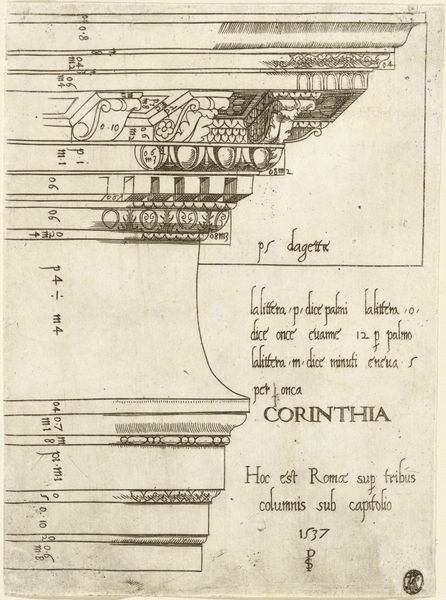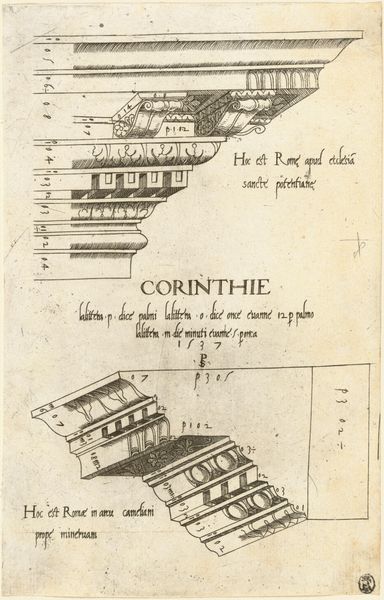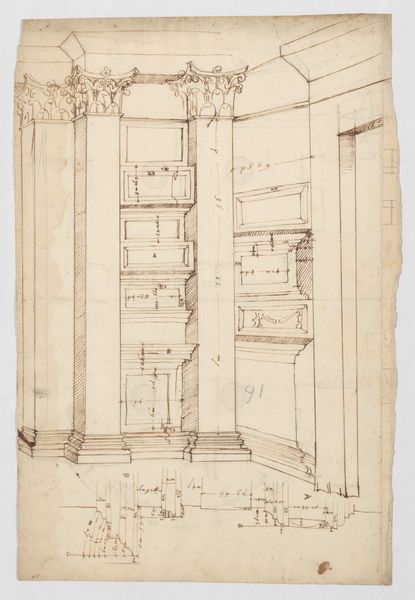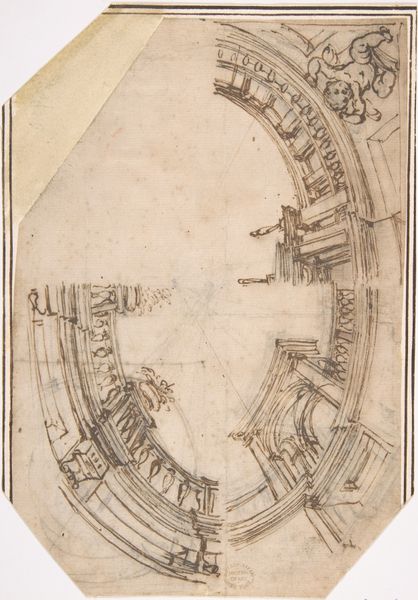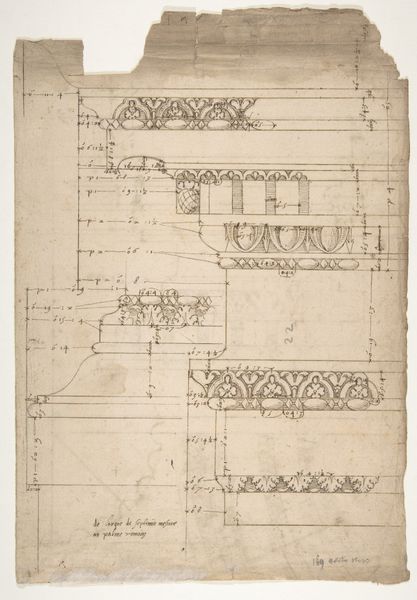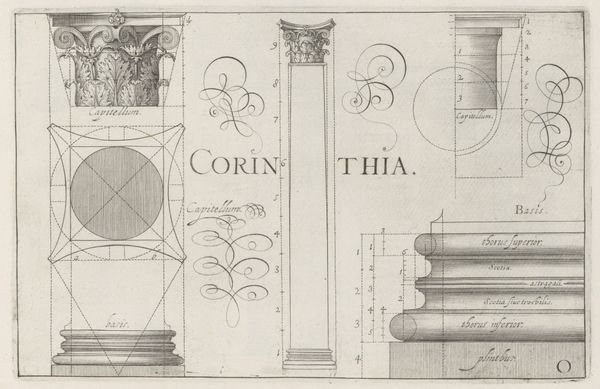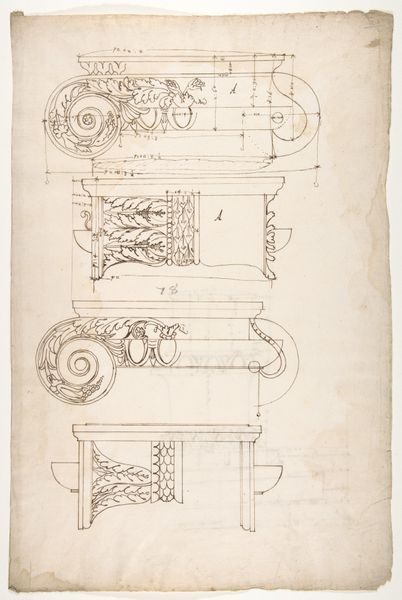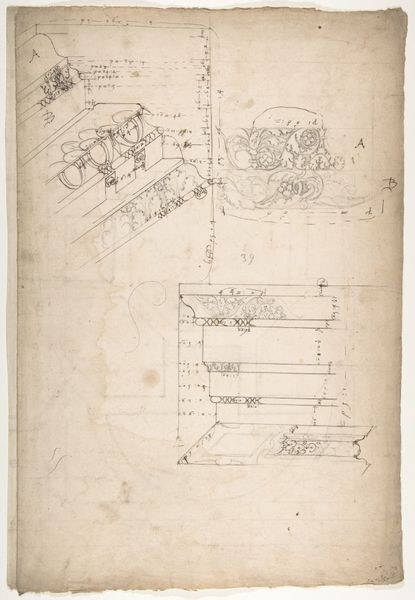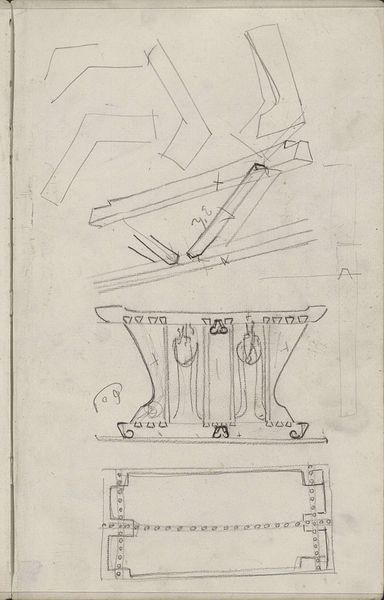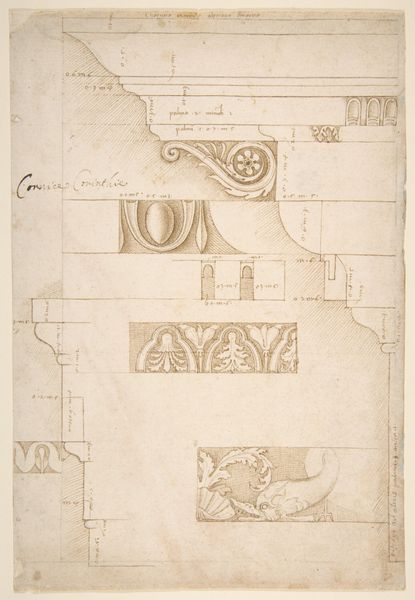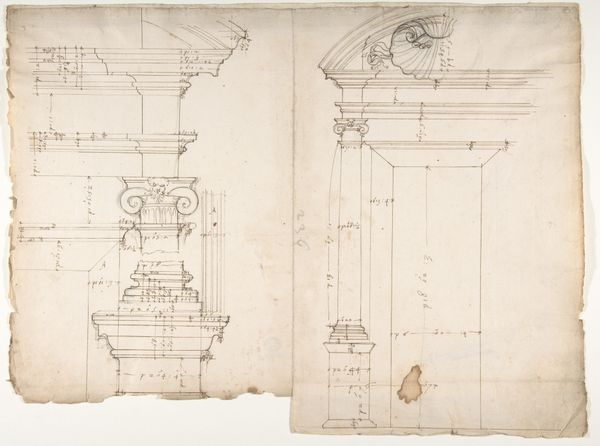
drawing, print, etching, paper, ink, graphite, engraving, architecture
#
drawing
# print
#
etching
#
paper
#
11_renaissance
#
ink
#
architectural drawing
#
graphite
#
history-painting
#
italian-renaissance
#
engraving
#
architecture
Copyright: National Gallery of Art: CC0 1.0
Curator: This is a print from 1537 titled "Entablature from the Temple of Vespasian, Rome," crafted by Master PS. It appears to be an etching or engraving, rendered in ink on paper. Editor: It strikes me as meticulously formal, yet almost skeletal. It's technical, but the hand-drawn lines and visible notations give it an interesting vulnerability. Almost as if the building is X-rayed, and not as solid or monumental as intended. Curator: Indeed. Notice how Master PS documented every detail of this classical entablature. He was interested in capturing not just the aesthetic beauty, but the precise architectural vocabulary, echoing the architectural treatises popular at the time that harked back to antique structures of symbolic meaning. Editor: Absolutely. By reducing it to these precise lines and numbers, there is perhaps something about its reduction that democratizes this classical element of immense structures, making it something accessible, like a blueprint, an equation available to the masses. But at the same time, does its reproduction normalize a history intrinsically tied to Empire? Curator: That's a fascinating question. The temple, originally dedicated to Vespasian, represented Roman imperial power. By reproducing this specific detail, Master PS contributes to its enduring influence, yes, even though it's filtered through a Renaissance lens of revival and admiration. Editor: Right, and so the act of reproduction then becomes complicit. Look at the decorative carvings - they all carry ideological weight, perpetuating cultural values and political ideas that, in their own time, bolstered power dynamics and, even in the present, make beauty a tool of social memory with dangerous agency. The Corinthian capital itself—a signifier of luxury, authority, even hubris. Curator: The symbolic importance is palpable, you are right, especially within its visual context. Consider also the power of architectural documentation itself— the desire to revive a glorious past through scientific precision is its own act of empowerment, one rooted in specific artistic goals as well. It seeks a continuous lineage. Editor: True. So in a sense, this print functions as both a preservation and a continuation—complicating its political legacy while celebrating its historical significance. But does it celebrate enough cultural recontextualization? Perhaps, a print like this, removed from the Roman forum, must be actively wrested into conversation with present day issues, ones which this image unconsciously reifies? Curator: It prompts us to engage actively, connecting past ideals to contemporary dialogues. It demands that we consider the ethical and social implications embedded within even the seemingly objective visual. Editor: Precisely. Ultimately, this entablature print invites us to recognize that even historical relics have relevance in current re-interpretations of power and identity. It's a ghost with political bite.
Comments
No comments
Be the first to comment and join the conversation on the ultimate creative platform.
